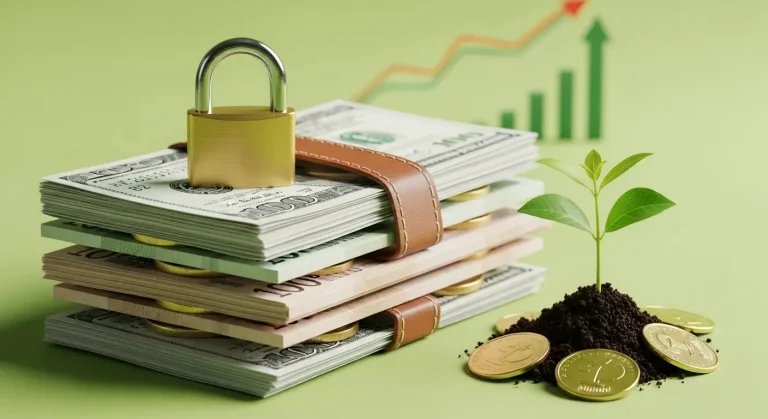Fiat money, unlike commodity money or precious metals like gold and silver, has no intrinsic value. Instead, its value is derived from the trust that people place in the issuing government and its backing by a legal system. Despite this abstract foundation, fiat money is constantly in flux, influenced by numerous factors that can cause its value to rise or fall. Understanding what might cause a change in the value of fiat money is essential for anyone interested in economics, finance, or even day-to-day financial decisions.
In this article, we will explore the various factors that can impact the value of fiat money, including government actions, economic shifts, market behaviors, and even global events. Through this, we aim to give you a deeper understanding of why fiat money is not as stable as it may seem and how external factors play a key role in its fluctuations.
1. Economic Indicators
Inflation and Deflation
One of the most common factors that affect the value of fiat money is inflation or deflation. Inflation refers to the decrease in the purchasing power of money, which leads to a general increase in the prices of goods and services. In contrast, deflation is the decrease in prices, often leading to an increase in the value of money.
- Inflation: When inflation is high, the value of fiat money decreases because each unit of currency buys fewer goods and services. Central banks like the Federal Reserve or the European Central Bank may print more money in an attempt to boost the economy, but this usually exacerbates inflation. For instance, in the 1920s, Germany experienced hyperinflation, and the value of the Deutsche Mark plummeted dramatically.
- Deflation: Deflation can lead to a stronger currency as the value of money increases. However, it can also cause problems like reduced spending, which can stifle economic growth. Japan, for example, has experienced prolonged deflationary periods, which have negatively impacted its economy.
Interest Rates
Central banks influence fiat money’s value through their control of interest rates. By adjusting interest rates, central banks can control the flow of money in the economy, which in turn impacts the value of the currency.
- High interest rates: When a central bank raises interest rates, borrowing becomes more expensive, which tends to reduce the amount of money circulating in the economy. This can lead to a stronger currency as demand for it increases.
- Low interest rates: On the other hand, when interest rates are lowered, borrowing becomes cheaper, increasing the money supply and potentially leading to inflation. This often weakens the value of fiat money.
2. Government Regulations and Monetary Policies
The role of government policies cannot be overstated when it comes to the value of fiat money. Government regulations can have a direct impact on the economic health of a nation, which in turn affects the strength or weakness of its currency.
Monetary Policies
Monetary policies, such as the setting of interest rates or quantitative easing, are directly controlled by central banks. These policies can either strengthen or weaken fiat money. For example, during the 2008 financial crisis, many central banks, including the U.S. Federal Reserve, implemented quantitative easing, injecting large amounts of money into the economy in an attempt to stabilize markets. While this helped to prevent a total collapse, it also contributed to a significant reduction in the value of fiat money due to the increased money supply.
Fiscal Policies
Fiscal policies, on the other hand, involve government spending and taxation decisions. High levels of government debt can reduce confidence in a nation’s currency, leading to a decrease in its value. For example, a country with a high debt-to-GDP ratio may face difficulties in servicing its debt, which can weaken its currency. Countries that rely heavily on borrowing may experience inflation, which dilutes the value of their fiat currency.
3. Changes in Commodities and Natural Resources
The value of fiat money can also fluctuate based on changes in the prices of commodities, especially those that are critical to the global economy. Commodities like oil, gold, and agricultural products have far-reaching effects on national economies.
Commodity Prices
- Oil prices: Since oil is a critical resource for the global economy, any significant changes in its price can have widespread effects. For example, if oil prices increase, countries that are dependent on oil imports may experience a decrease in the value of their currency due to higher trade deficits. Conversely, oil-exporting countries might see an increase in their currency’s value if prices rise.
- Gold prices: While fiat money is no longer directly linked to the value of gold, changes in the price of gold can still signal a shift in global economic stability. When gold prices rise, it often signals economic uncertainty, which could prompt investors to seek more stable investments, such as government bonds or foreign currencies, which can devalue the local fiat money.
4. Individuals’ Spending and Saving Habits
Changes in how people spend and save money can also lead to fluctuations in the value of fiat money.
Consumer Confidence and Spending
When consumers are confident about the economy, they tend to spend more, which can stimulate economic growth and increase demand for fiat money. However, if there is uncertainty or fear of economic instability, consumers may save more, leading to a reduction in overall demand. A reduction in spending can weaken the economy and the currency, as demand for goods and services decreases.
- Spending Spree: During times of optimism, people are more likely to spend, leading to higher demand for goods and services. This can boost the currency’s value if the demand for the currency rises internationally.
- Increased Savings: When the opposite occurs, and people hoard their money due to economic uncertainty, the demand for currency falls, potentially causing its value to weaken.
Debt Levels and Borrowing Behavior
Another critical factor that affects the value of fiat money is the level of national and individual debt. As individuals and governments take on more debt, the value of fiat money can be impacted. If a country’s debt is high and its economy is slowing down, the government may need to print more money, which could lead to inflation and a decrease in the value of its currency. High levels of debt can also lead to a loss of investor confidence, further devaluing the currency.
5. Global Events and Geopolitical Factors
In today’s interconnected world, global events, political decisions, and geopolitical tensions can have an immediate and dramatic impact on the value of fiat money.
Political Instability
Political instability within a country can erode trust in its government and the currency it issues. For instance, in countries experiencing political turmoil, citizens may fear for the stability of their currency and may even start to convert their money into more stable foreign currencies or commodities like gold. This outflow of money can lead to a sharp depreciation in the value of the local fiat currency.
Wars and Conflicts
Wars, sanctions, and other geopolitical crises often have a significant impact on the global economy. For example, the ongoing conflict in Ukraine has affected the value of the Russian ruble due to international sanctions and trade restrictions. Similarly, trade wars can affect the value of the currency, especially if one of the parties is a major global player like China or the U.S.
Global Trade
Changes in global trade relationships can also impact the value of fiat money. A country’s currency may appreciate if its trade partners demand more of its goods or services, creating a higher demand for its currency. Alternatively, tariffs and restrictions on imports and exports can have the opposite effect, weakening the currency as trade becomes less fluid.
Conclusion
The value of fiat money is not static, and a multitude of factors can cause it to fluctuate. From changes in economic indicators like inflation and interest rates to global geopolitical events, fiat money’s value is constantly influenced by internal and external forces. Understanding these variables allows us to better navigate the complex financial world and anticipate how different events may impact our purchasing power.
Whether it’s inflation, government policies, global trade, or even individual behaviors, all of these elements play a role in shaping the value of fiat money and, by extension, the global economy.
Visit homepage for more content.
FAQs
How does government debt influence the value of fiat money?
Government debt, especially when it reaches unsustainable levels, can lead to inflation or a loss of confidence in the currency. As debt increases, governments may resort to printing more money, diluting the value of the currency.
Can changes in interest rates help stabilize the value of fiat money?
Yes, central banks adjust interest rates to control inflation and stabilize the economy. By raising interest rates, a central bank can attract foreign investment, strengthening the currency. Conversely, lowering rates can increase the money supply, potentially devaluing the currency.
What role do foreign exchange markets play in the value of fiat money?
Foreign exchange (Forex) markets determine the exchange rate of a currency relative to others. Large-scale trading in Forex markets can cause fluctuations in the value of fiat money as investors buy and sell currencies based on economic conditions and geopolitical events.
How do international trade agreements impact the value of a country’s fiat money?
Trade agreements can influence the value of a currency by increasing or reducing demand for a country’s goods and services. A stronger trade relationship typically increases demand for the country’s currency, strengthening its value.
What is the impact of financial crises on fiat currency value?
Financial crises, such as the 2008 global financial crisis, can lead to a loss of confidence in a country’s economy, causing a sharp drop in the value of its fiat currency. Central banks often intervene with measures like quantitative easing to prevent further devaluation.





